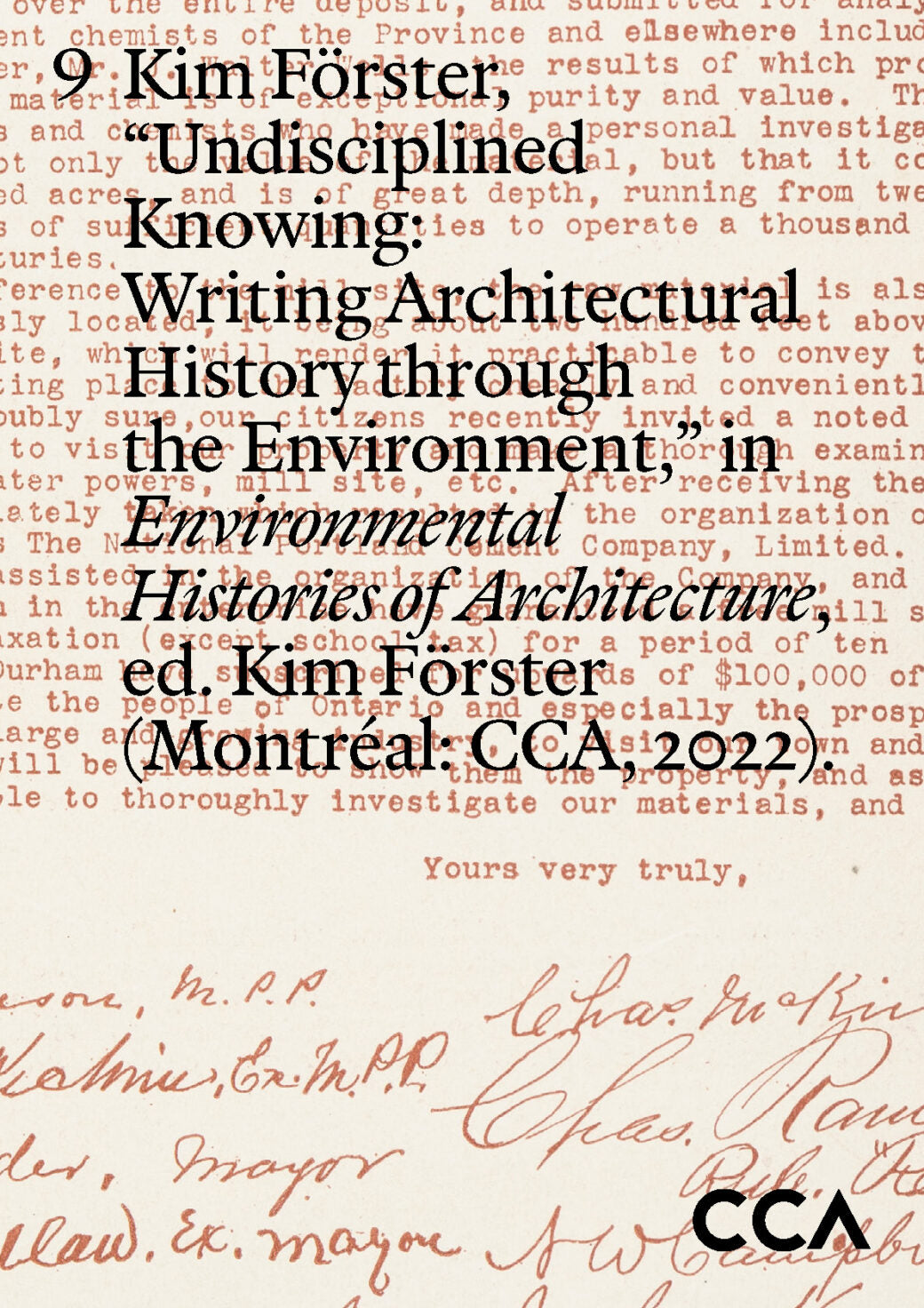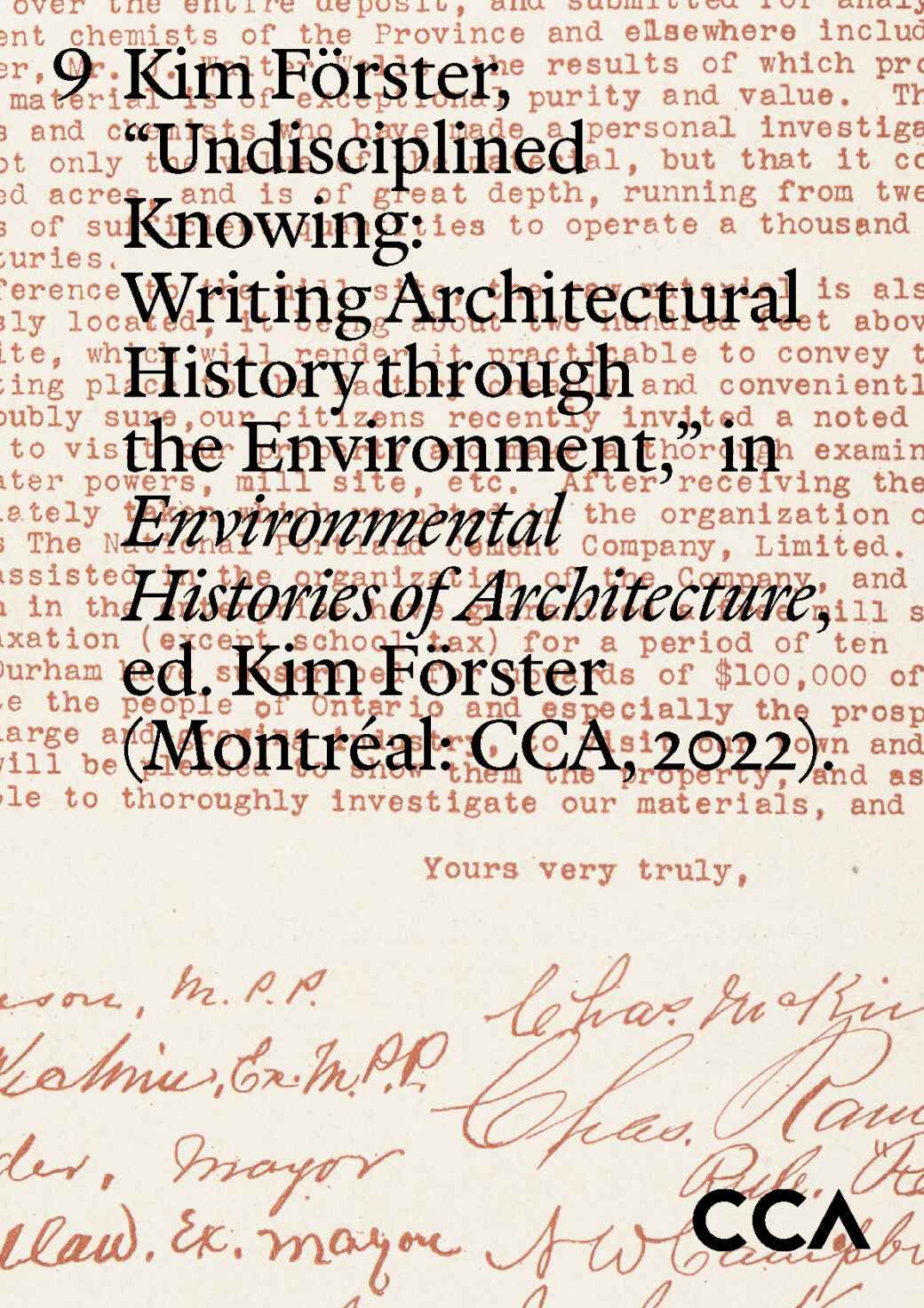Undisciplined Knowing: Writing Architectural History Through the Environment
Undisciplined Knowing: Writing Architectural History Through the Environment
Environmental Histories of Architecture presents the work of eight researchers who each analyze specific environmental relations, crises, and reforms and demonstrate how society and the environment have been co-constructed, represented, and lived in their respective geographies. While their essays are published independently as chapters, together they cover an expansive range of thinking about how the environment changed, and was changed by, architecture.
In Chapter 9, Kim Förster surveys and unfolds three key issues for the architectural humanities: energy and climate; materials andtoxicity; and more-than-human and entangled histories. Such narratives of the environment have thus far only played a minor role in architecture and architectural histories, which are still strongly influenced by nineteenth and twentieth-century notions of innovation, growth, and progress. But beyond mourning or garnering hope in the face of current climate and biodiversity crises, it will be crucial in the years ahead for architecture to productively cope with loss and actively approach a building transition. Taking environment as both a research subject and a category of analysis, this concluding chapter frames Environmental Histories of Architecture by sketching prospects for future research and pointing to new perspectives on social relations to nature.
Editor: Kim Förster
Managing Editor: Claire Lubell
Copyeditor: Lucas Freeman
Other contributors: Aleksandr Bierig, Nerea Calvillo, Daniel Barber, Kiel Moe, Jiat-Hwee Chang, Isabelle Doucet, Hannah le Roux, Paulo Tavares
Graphic Design: Tessier A
Programming: Rosen Tomov
Published by the CCA and distributed open access through Library Stack.
This open-access publication is made available according to the terms of the license CC BY-NC-ND.
Click here to download the PDF.
Add to cart to download the ePub.
Couldn't load pickup availability


